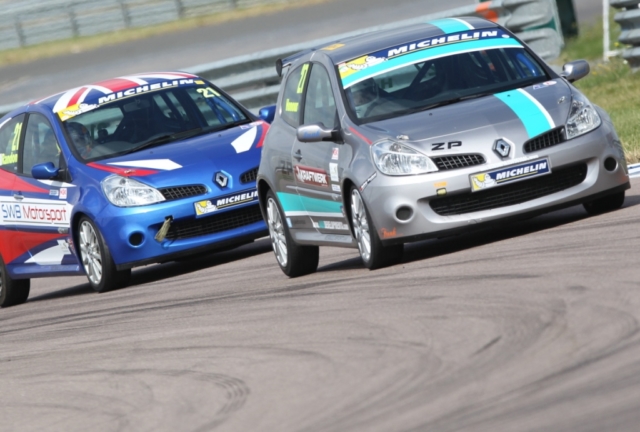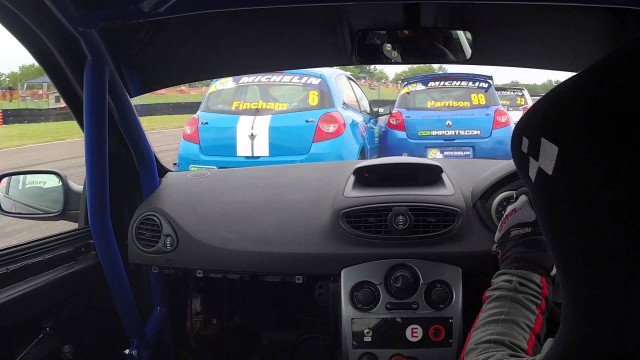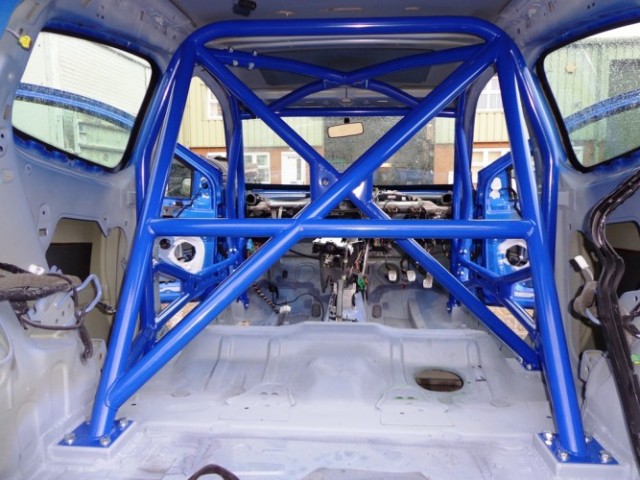In Europe, one of the more popular ways to get one’s foot in the motorsport door is by taking the Clio Cup route. As the cars are relatively inexpensive and can be turned into capable racers for little, they’re hugely appealing to a wide variety of people. Mechanical parity and a lightweight car with a short wheelbase make for exciting, race-long battles that surprise the observer with how ferocious these unsuspecting cars can be.

With minimal performance modifications, the field is exceptionally close, yet the performance level is quite surprising thanks to the Clio’s lightweight.
In the spirit of true yesteryear racing, Michelin has reached out to people of modest means who want to try their hand at competitive racing by allowing entrants to enter their modified Clios in a highly-respected series with a variety of different drivers from differing backgrounds. Once lodged comfortably in this entry-level category, racers have the chance to make something out of themselves and get noticed. It’s a true homage to the older categories that lifted ambitious, talented drivers without a magnate’s support into the world of professional racing. It’s a crying shame there aren’t more series like these nowadays.
A car with minor, cosmetic damage can be found for peanuts, and the simplistic conversion kit makes the process even simpler. The customers are then able to modify their cars as they choose, as long as they’re within the rules, which concern the budget primarily. The category is intended as one that emphasizes driving skill and not tuning, like Chump Car or Spec E30, albeit with a more competitive and varied field. Thankfully, the a beaten roadcar can be made into a satisfying wheel-banger with roughly $8,500 – and anyone trying to make a racing machine out of modern road car will be hard-pressed to beat that figure.
Like any proper racing car, the car needs to be lightened and stiffened for performance and safety reasons. However, in being part of an established category, the safety/tech standards are exceptionally high – and the cage must be welded in skillfully to be eligible, as well as a proper fire extinguishing system. Following that, a set of kill switches are necessary, and waterproofing them is just a matter of plastering some clay silicone sealant over the terminals. Close racing will invite a bit of drama, and all minor modifications will make sure a driver lives another day, and hopefully ascends up the racing ladder. Once the safety modifications are done, all that remains are the few performance modifications.
Essentially, a set of Renault rally car coilovers, strengthened top mounts, and Ferodo DS11 brake pads are the modifications which will make the most improvements. There are a few powertrain upgrades like an upgraded clutch, a Milltek exhaust, and a Pipercross air filter round out the go-fast goodies. Then, the wheel arches need to be removed since this car will sit much lower and the bashing a quickly driven Clio Cup will take over the curbs will turn those plastic sheathes into a mess very rapidly.

It’s dubious there’s another category that offers modern machinery and true mechanical parity for relatively little.
It’s wonderful that a respected marque like Renault is taking the time to get young talent into the door with minimal financial investment, as that has been shown to attract a variety of fans and ensure some real talent makes it into the upper echelons of the motorsport world. While Mazda has done wonders for grassroots racing on this side of the pond, there’s still quite a difference between corporate interest the US versus the UK when it comes to entry-level series like this. We could certainly use a few more of these stateside.






















